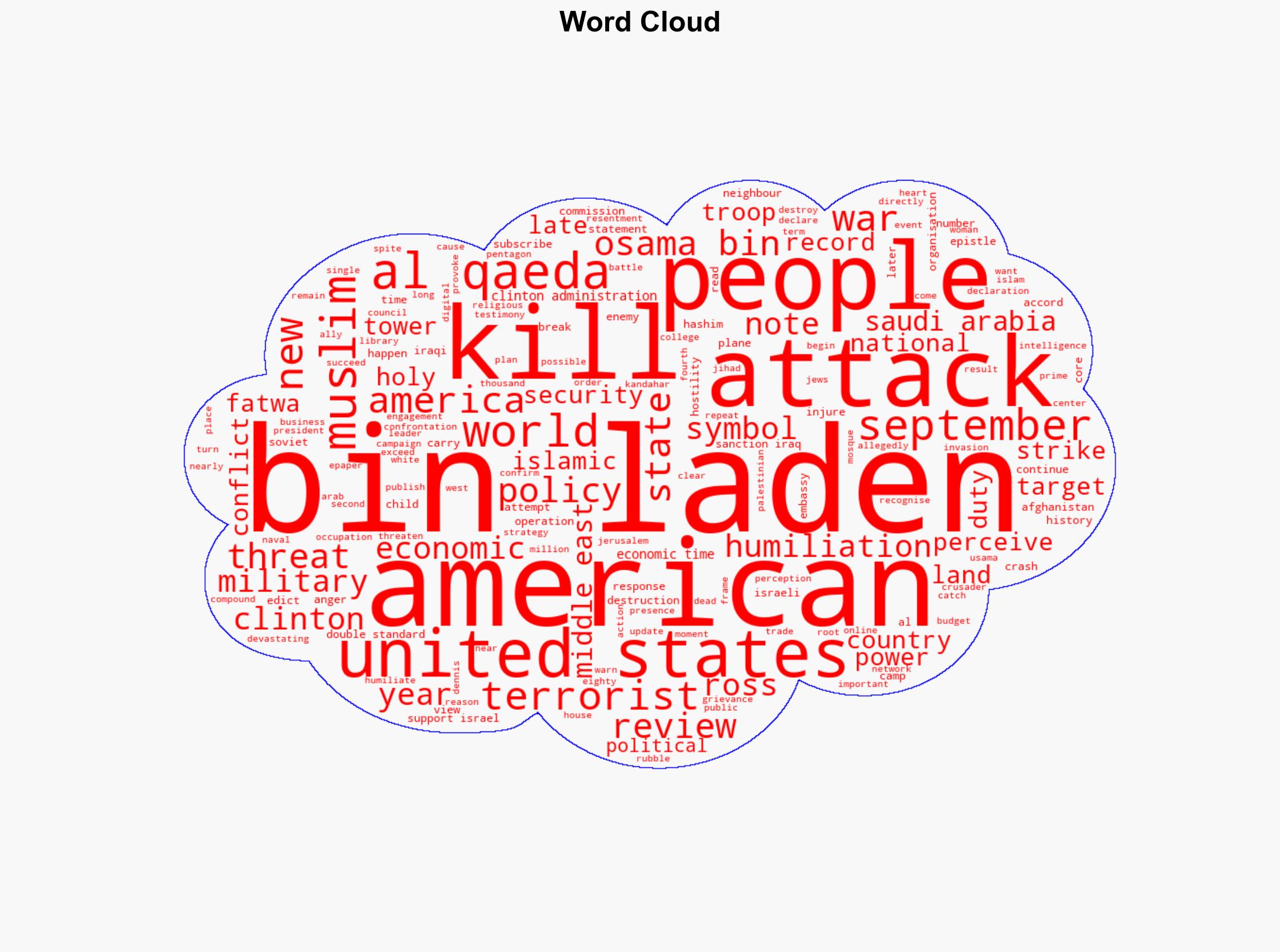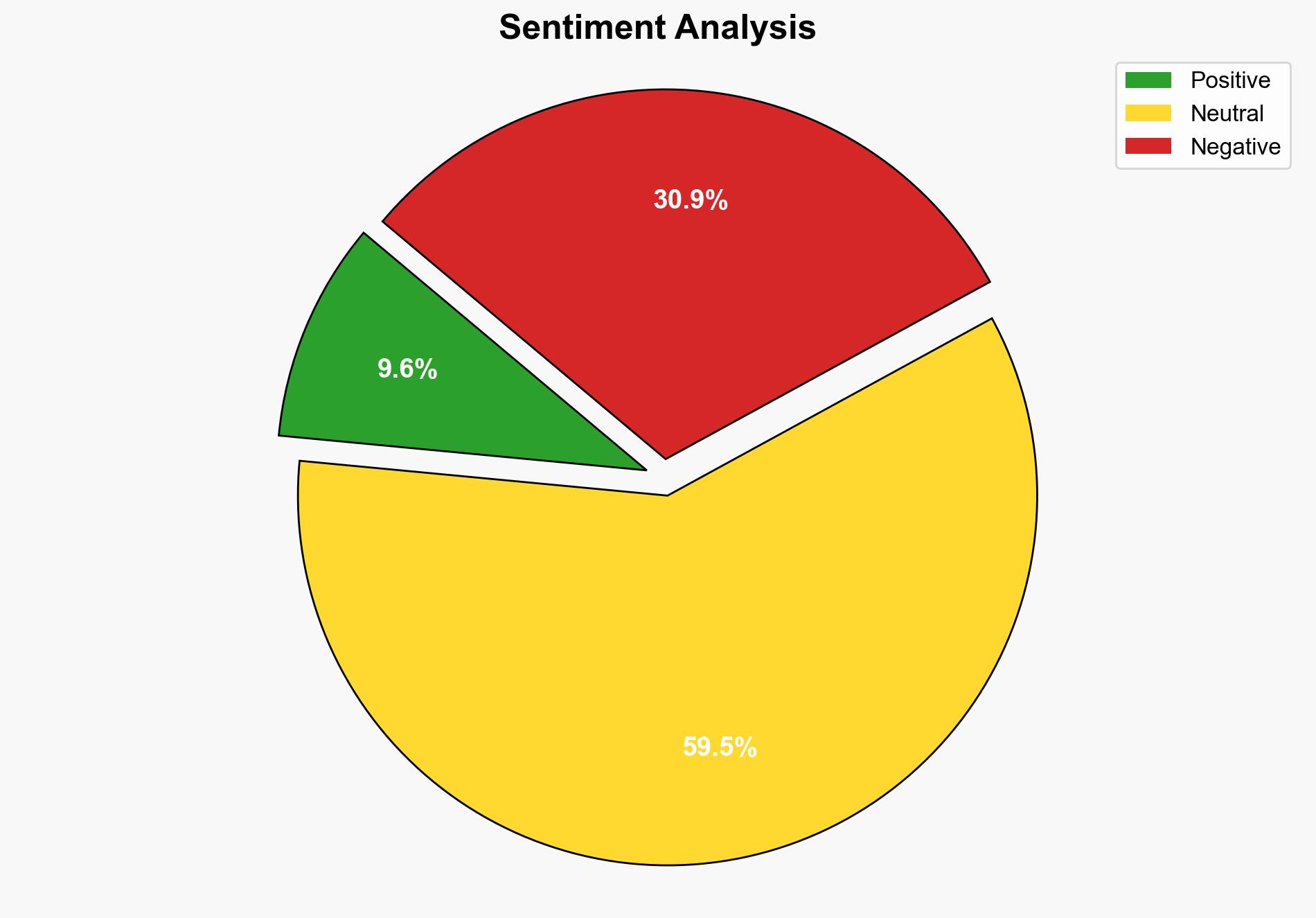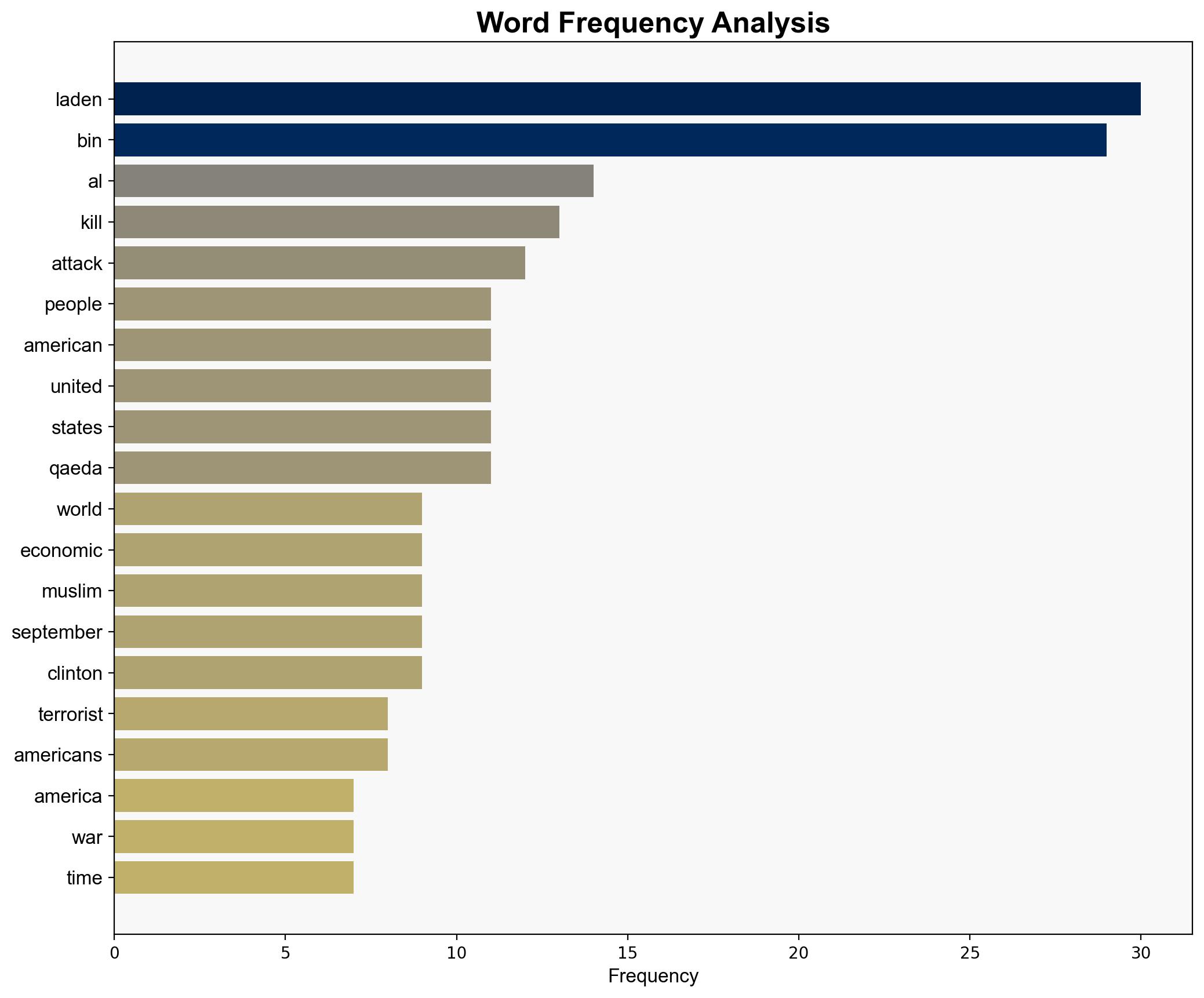911 Why did Osama bin Laden attack the United States – The Times of India
Published on: 2025-09-11
Intelligence Report: 911 Why did Osama bin Laden attack the United States – The Times of India
1. BLUF (Bottom Line Up Front)
The most supported hypothesis is that Osama bin Laden attacked the United States due to a combination of ideological motivations and perceived grievances against U.S. military presence in the Middle East. Confidence level is moderate due to reliance on bin Laden’s public statements, which may be strategically framed. Recommended action includes enhancing counter-terrorism measures and addressing underlying geopolitical tensions.
2. Competing Hypotheses
1. **Ideological and Religious Motivation Hypothesis**: Bin Laden’s attack was primarily driven by ideological beliefs and religious motivations, as articulated in his fatwas and public statements. He viewed the U.S. as a direct threat to Islam and sought to expel American influence from Muslim lands.
2. **Geopolitical and Strategic Motivation Hypothesis**: The attack was a strategic move to provoke the U.S. into military actions that would galvanize support for al-Qaeda and destabilize the region, thereby increasing bin Laden’s influence and recruitment capabilities.
Using ACH 2.0, the first hypothesis is better supported by bin Laden’s consistent public declarations and the historical context of U.S. military presence in the Middle East. The second hypothesis, while plausible, lacks direct evidence of strategic intent beyond ideological declarations.
3. Key Assumptions and Red Flags
– **Assumptions**: The analysis assumes bin Laden’s public statements are genuine reflections of his motivations. It also presumes a direct correlation between U.S. military presence and bin Laden’s actions.
– **Red Flags**: Potential cognitive bias in interpreting bin Laden’s statements as purely ideological without considering strategic deception. Lack of direct evidence linking specific geopolitical strategies to the 9/11 attacks.
– **Blind Spots**: Limited insight into internal al-Qaeda deliberations and potential external influences on bin Laden’s decision-making.
4. Implications and Strategic Risks
The attack’s implications include heightened global terrorism risks, increased U.S. military engagement in the Middle East, and potential for further radicalization. Strategic risks involve ongoing geopolitical instability and the possibility of similar attacks if underlying grievances remain unaddressed. Economic impacts include increased defense spending and potential disruptions to global markets.
5. Recommendations and Outlook
- Enhance intelligence-sharing and counter-terrorism collaboration with international partners.
- Address root causes of extremism through diplomatic and economic initiatives in the Middle East.
- Scenario Projections:
- Best Case: Successful diplomatic resolutions reduce terrorist recruitment and stabilize the region.
- Worst Case: Continued U.S. military presence exacerbates tensions, leading to further attacks.
- Most Likely: Ongoing low-level conflicts with periodic escalations.
6. Key Individuals and Entities
– Osama bin Laden
– Al-Qaeda
– U.S. military forces in the Middle East
7. Thematic Tags
national security threats, counter-terrorism, geopolitical tensions, Middle East conflict




